ntro: We’re stuck in Australia for two extra weeks, waiting for Russian visas. Here’s one of the things we did in the meantime!
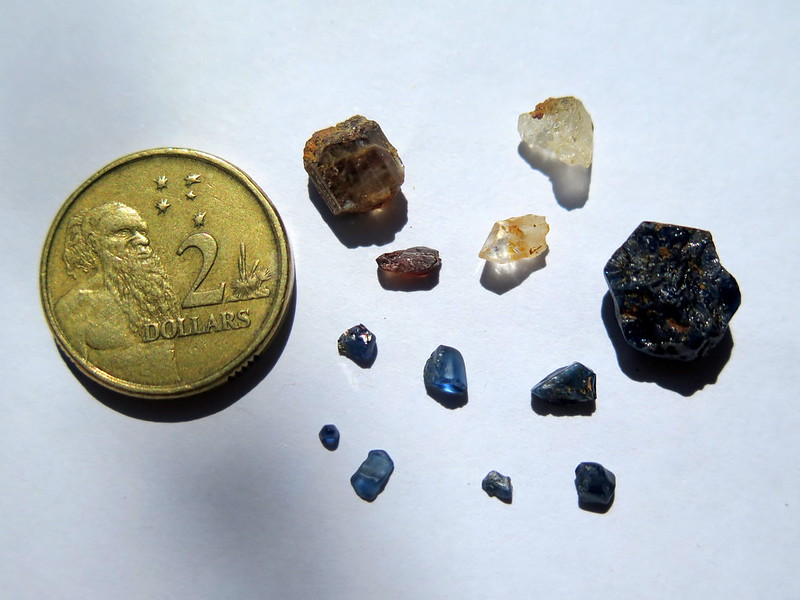
I love searching for things. I’ve been on fossil digs around California, used to trawl estate sales in college for rare books, and spent my spare time in grad school foraging for edible plants and fungi. This also worked out pretty well in my graduate research, where there was a lot of searching how to do things, trying the things, and then searching for new ways to do things when those things failed. Five and a half years of that gets you pretty good at searching.
Wonderfully, Australia is one of those places where you can search for precious stones and minerals and keep them, which they call fossicking. Several parcels of land throughout the country are open to fossickers to collect everything from gold to opals, sapphires, rubies, zircon, and diamonds. Rules for fossicking vary by state, but in New South Wales you can purchase a permit ($27.5 AUD a year) to go fossicking in State Forests. They even have State Forest areas where you’re allowed to fossick without a permit. Update: I can’t find information on the permit-free fossicking areas, so the rules might have changed.
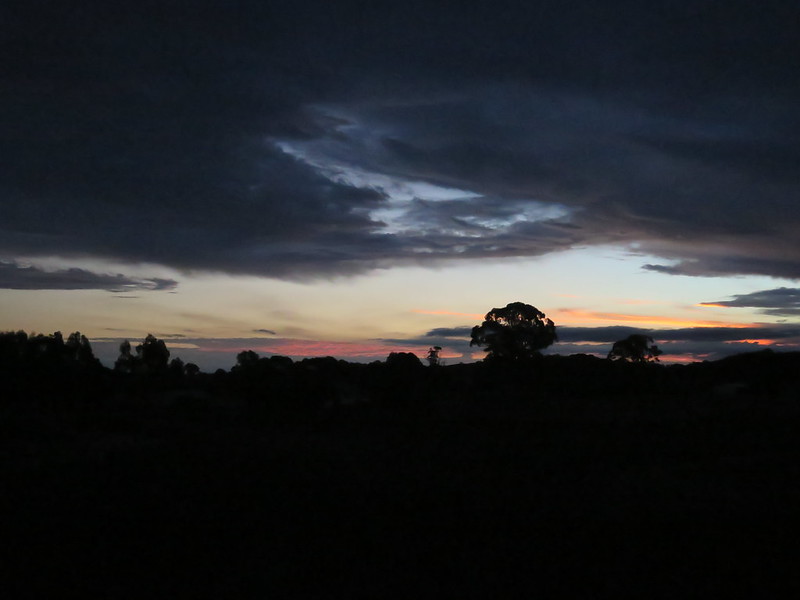
Located 3 hours from Sydney (without traffic), Oberon is a little town on the other side of the Blue Mountains with several locations for fossicking without a permit. Though it’s accessible by public transit, the fossicking site aren’t: you can take a regional train out of Sydney to Bathurst and a bus from Bathurst to Oberon, but the fossicking sites are located 20 km or more south of the town. If you go by public transit, you’ll have to hitchhike or walk the rest of the way. Thankfully, I have awesome friends in Australia. Hugh drove all the way from Lake Cargelligo to come visit us in Sydney, and when we explained our fossicking plans he happily joined us. Transit solved!

Then we had to come up with fossicking materials. The standard fossicking kit comprises a shovel/trowel for moving dirt, a set of differently-sized strainers for separating stones, and a wide shallow pan for panning. We weren’t keen on spending a lot of money on these materials, so we went to the local Vinnie’s (a thrift store) and picked out the following: a colander and a large ceramic bowl. To that we added our aluminum pot from our camp stove kit for panning and the trowel from our camping kit.

We left Sydney late, so we camped one night at Millionth Acre and nearly destroyed Hugh’s car. It turns out that the main campsite is really only accessible by 4WD, but this is what you get when it’s late and you just look up the nearest campsite in Australia. After nearly getting stuck driving down a hill, we pushed the car out of its rut and found a flat-ish site to pitch the tent. In the morning, were greeted by kangaroos and jumping jacks, a type of venomous ant (Stoytcho says: Thanks, Australia). We decamped and drove on to Oberon.
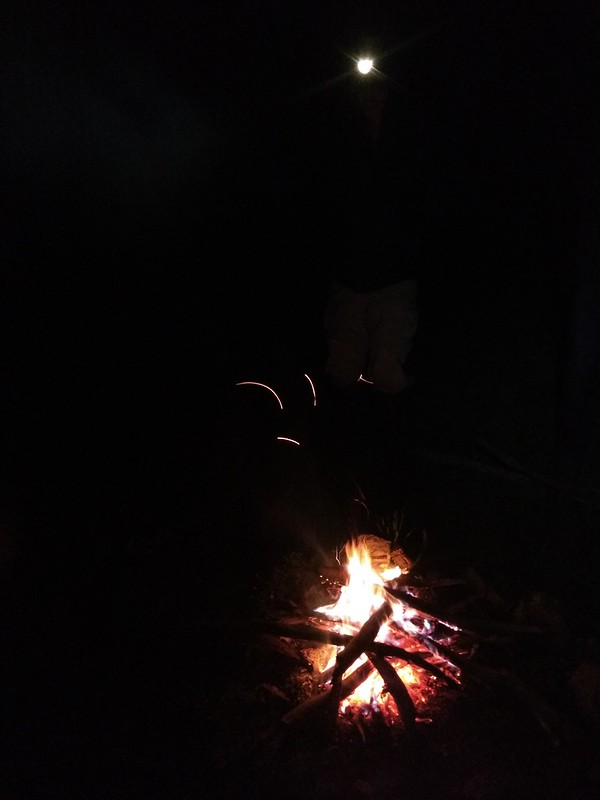

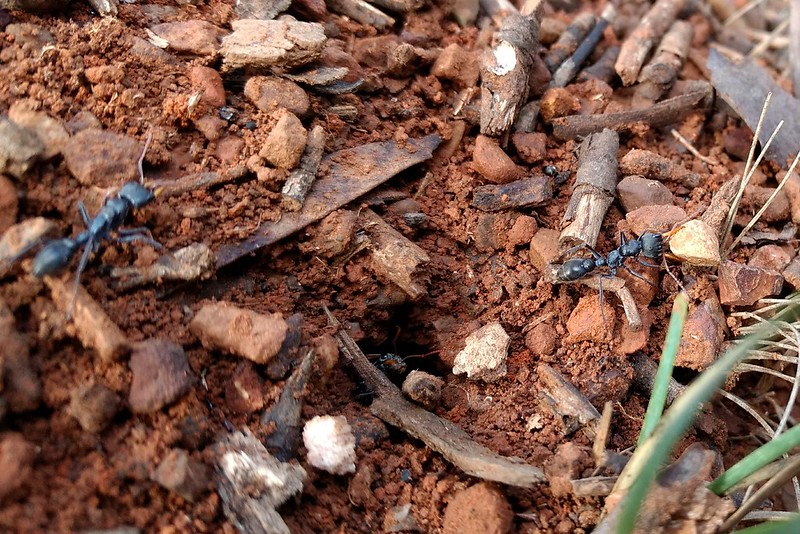
Our first stop in Oberon was for coffee, and our second was at the tourism office for fossicking information. A woman there provided us with maps, plenty of advice on the different fossicking sites, and the recommendation that if we see an older gent in a white truck, we should say hello because he’s been fossicking down there forever. (Note: This guy is apparently well-known and famous). Armed with information, we decided to try Sapphire Bend for two main reasons: it was the closest, and it had a water supply in a nearby dam that we could use to wash our finds. We also had a pretty sweet hand-drawn map of the location:

Sapphire Bend wasn’t hard to find—we drove south from Oberon on Abercrombie Road for 20 km, then turned left at the first campsite we saw (Black Springs), and then made the second left onto a dirt road (River View Road). Though there was a lot of dust, we could manage the road in Hugh’s non-4×4 car. We drove past endless stands of pine trees, the remnants of pine plantations from a logging company. A few km down on the left there was a huge sign displaying the words “Public Fossicking Area”. Surrounding it were dozens of shallow holes, remnants of fossickers come and gone.

We started off by hiking, following the foot trails laced through the public fossicking area to figure out where would be best to search. Our first sapphire is a lucky find on the tailings of someone’s hole. It had a sheared face that glinted like a mirror in the sun, making it easy to spot. Holding it up to the sunlight, it looked like a piece of blue glass.
After pocketing the first sapphire, we loaded a few pails of dirt into our pot and bowl, then returned to the car and drove to a nearby pond to begin sifting through it. We’d put a small handful of dirt through the colander with a bowl underneath, then dump water on top of it to wash the smaller rocks through. After picking through the big rocks (which inevitably had nothing), we’d discard them and look through the smaller rocks and silt collected in the bowl below. We found a couple more sapphires and a lot of quartz crystals.
Stoytcho and I returned to Sydney but wanted to do more fossicking, so we booked a car for a couple of days the following week. I also did more research on fossicking forums to help us identify good places to search, which mostly came down to learning to identify the wash layer; it’s the layer with all the pebbles/rocks deposited by a stream bed, and the most likely place to find sapphires. To improve our gear, we visited a local hardware store for mesh and scrounged up a bucket to make a strainer with a finer mesh size than the colander:
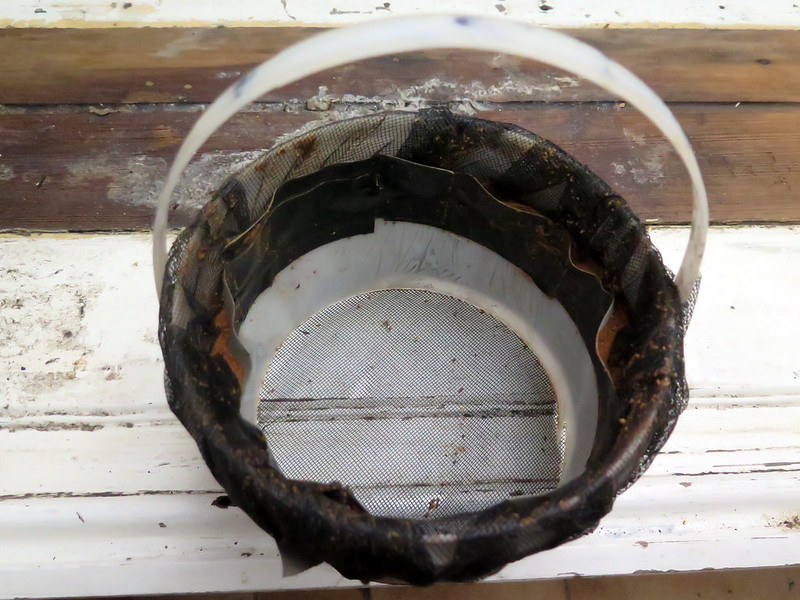
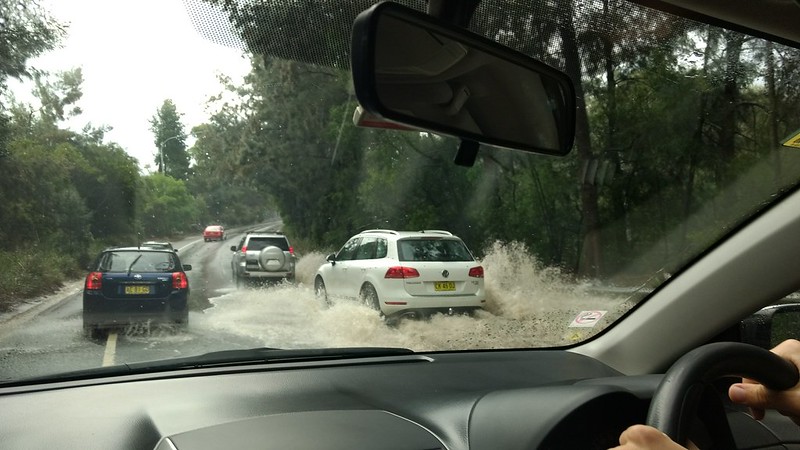
On our second trip out to Sapphire Bend, we camped at Black Springs Campsite up the road. This worked out perfectly, because the site was quiet and had water and restrooms. Heavy rains from the last few days had filled many of the fossicking holes with water, meaning we didn’t have to drive out to the pond to get water. We looked through less filled holes for a wash layer, started fossicking, and managed one more sapphire. The old guy mentioned by the Oberon Tourism Office even stopped by for a chat and with a wink, he pointed out a few “good” holes. He knew his stuff.
By day’s end, we’d collected a dozen potential sapphires and zircons (including one huge chunk of sapphire), as well as a couple dozen small pieces of potential black spinel. Fossicking was hard work, much less standing and moving and much more sitting, patiently sifting through bits of rock in search of glassy glints in the sunlight. But there’s nothing like the excitement of searching for something and finding it.
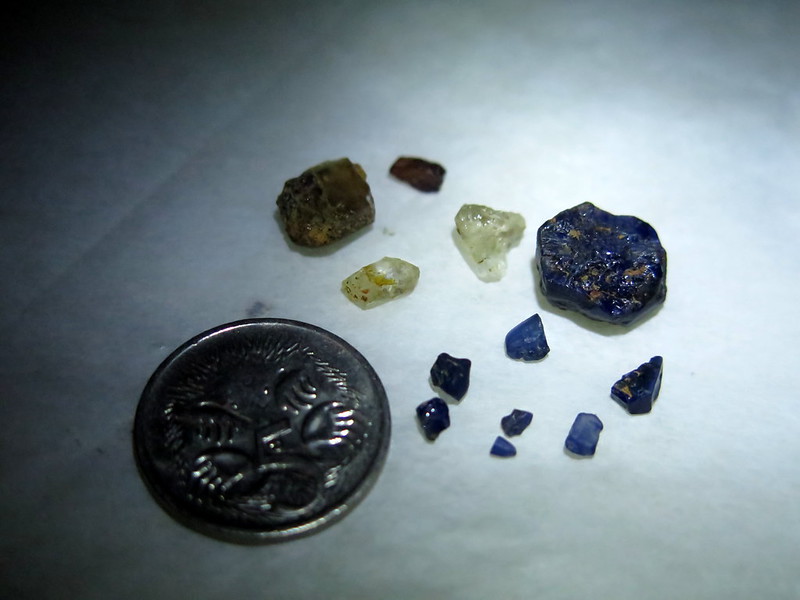
—
Want to fossick yourself? You can rent a kit from Oberon’s tourism office.
Fossicking with a permit and want to know what’s around? You can find a great map (maintained by local NSW fossickers) here.
